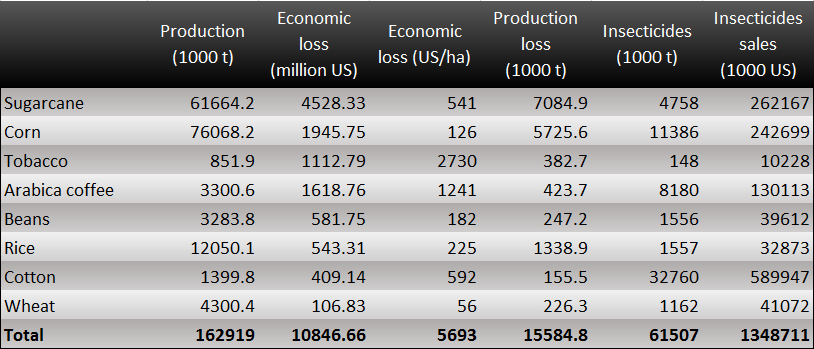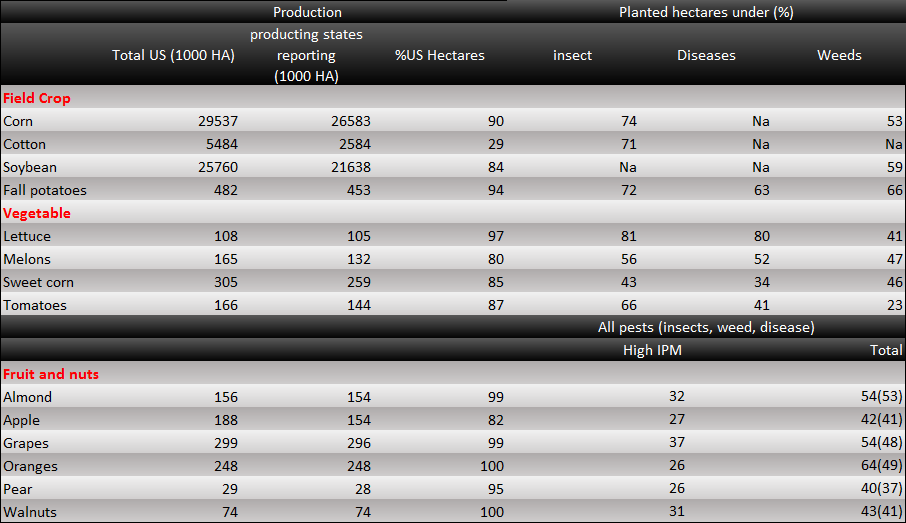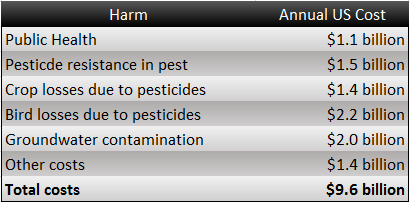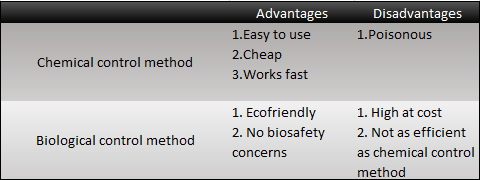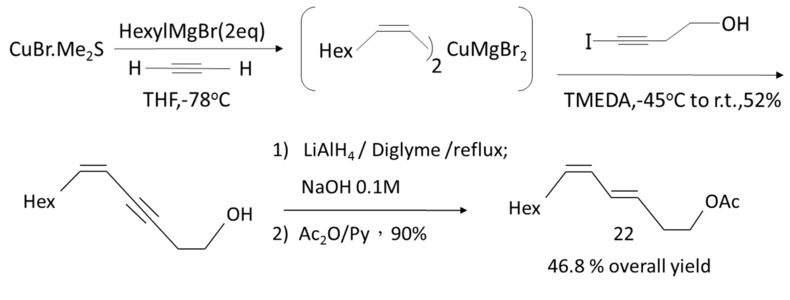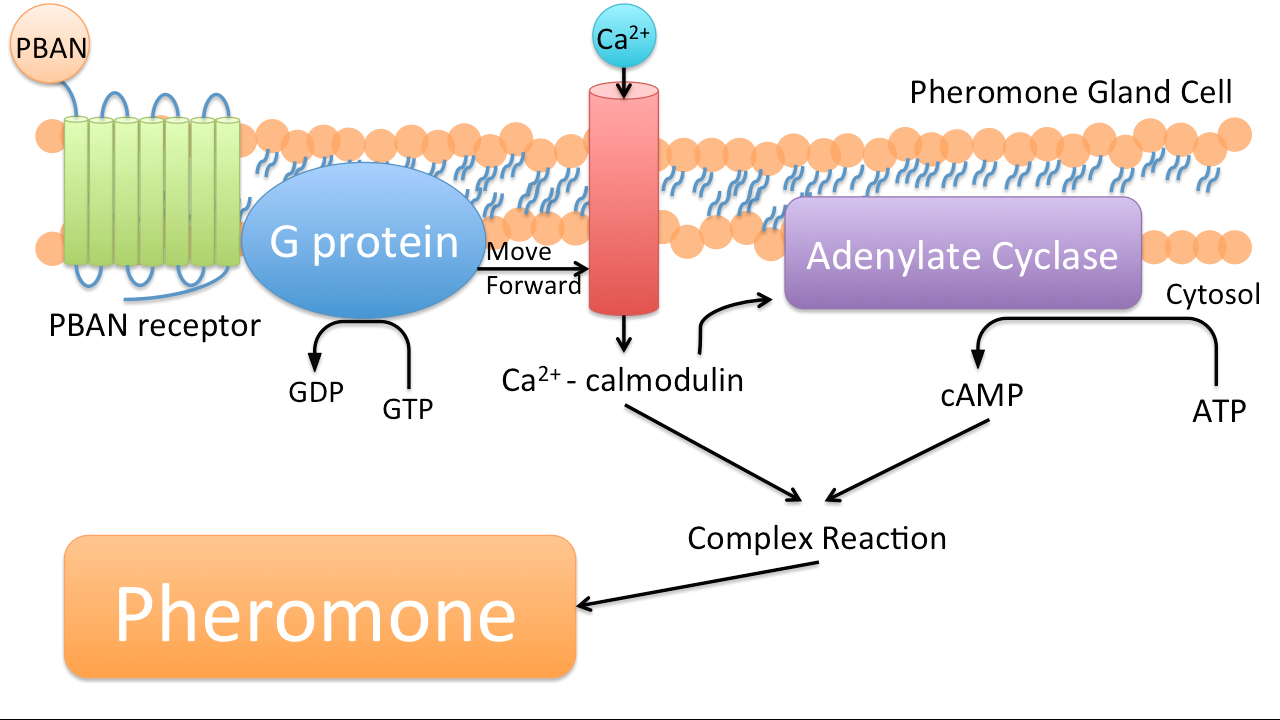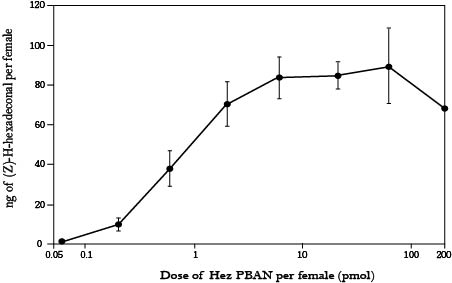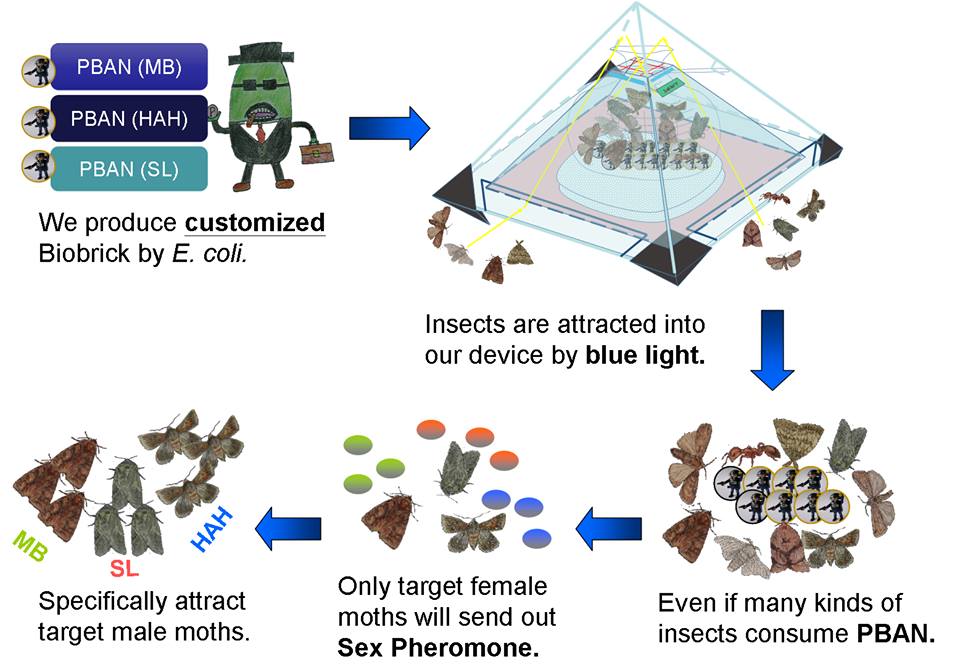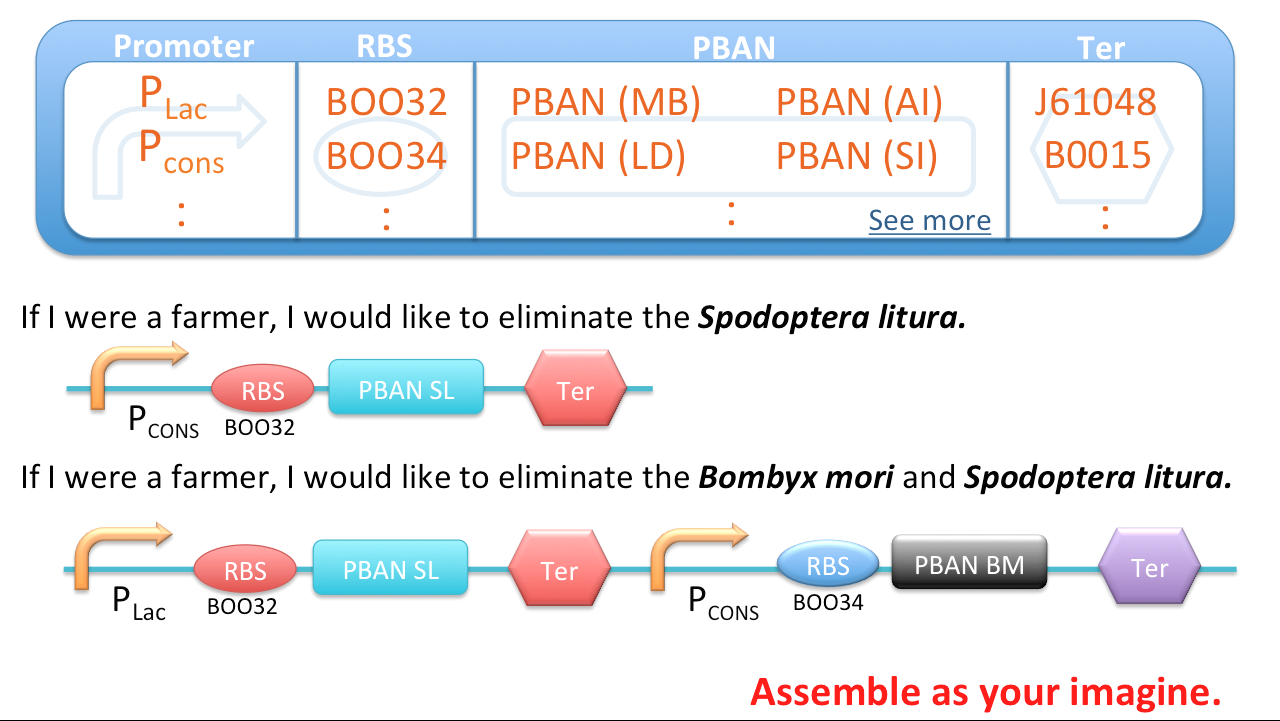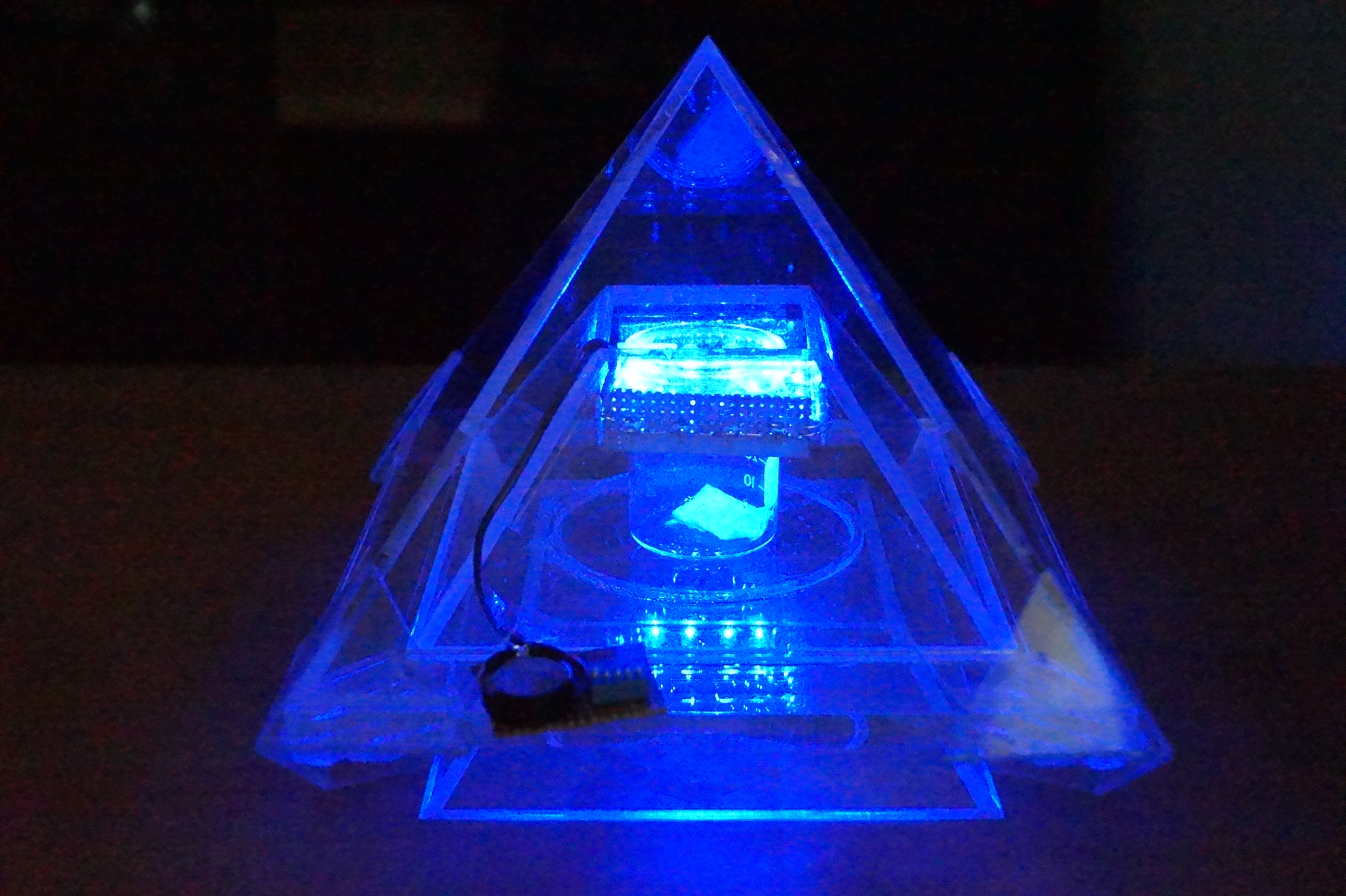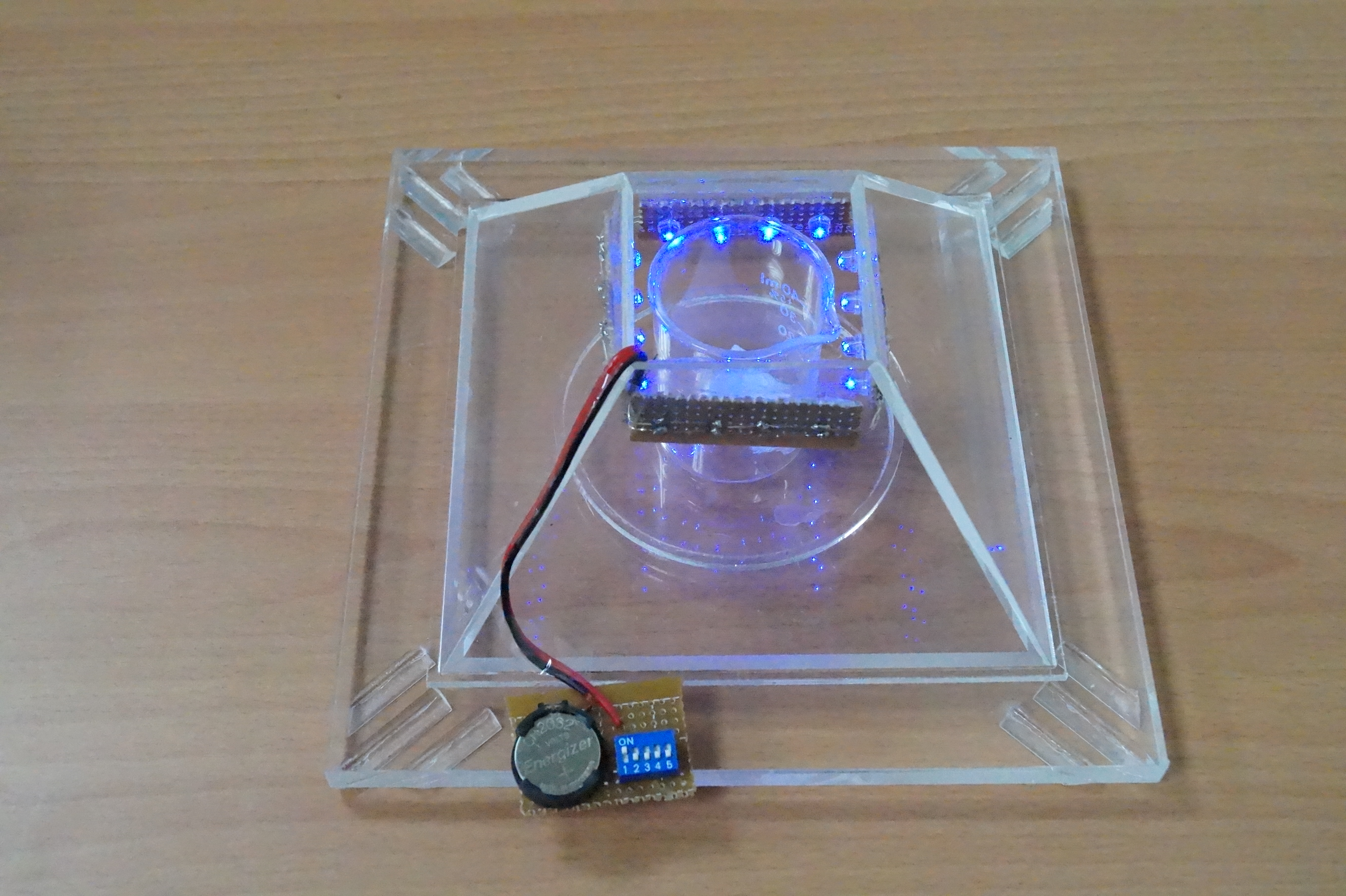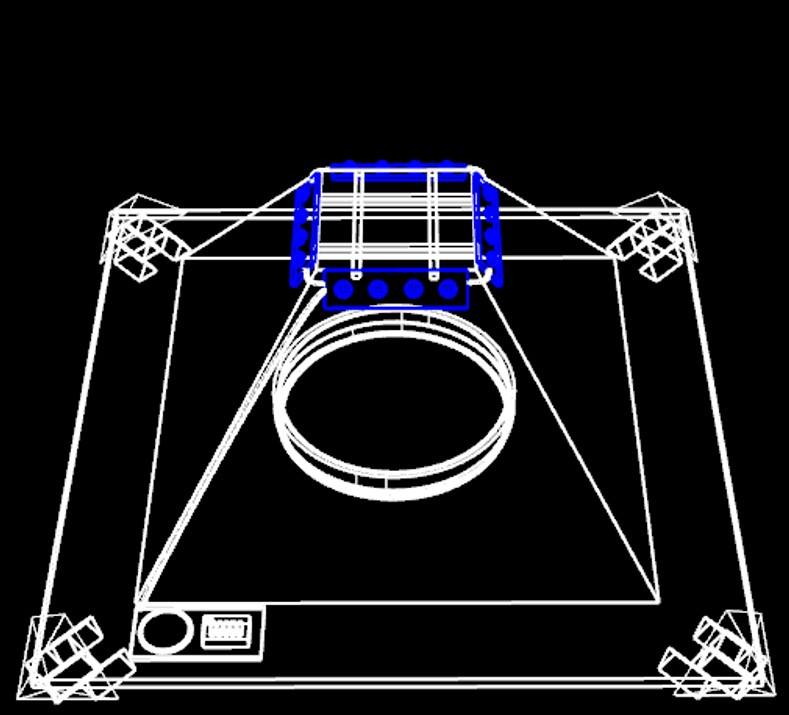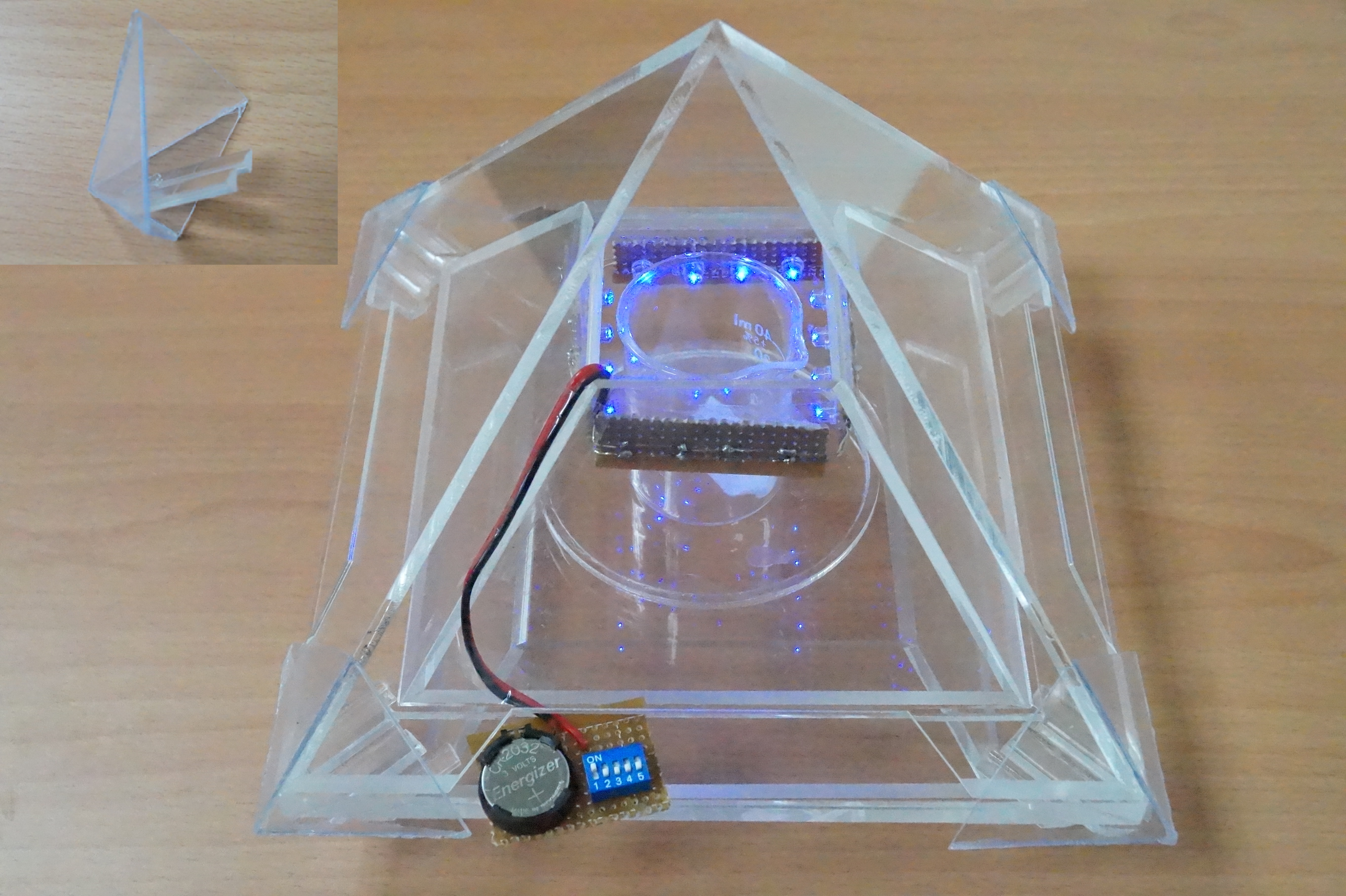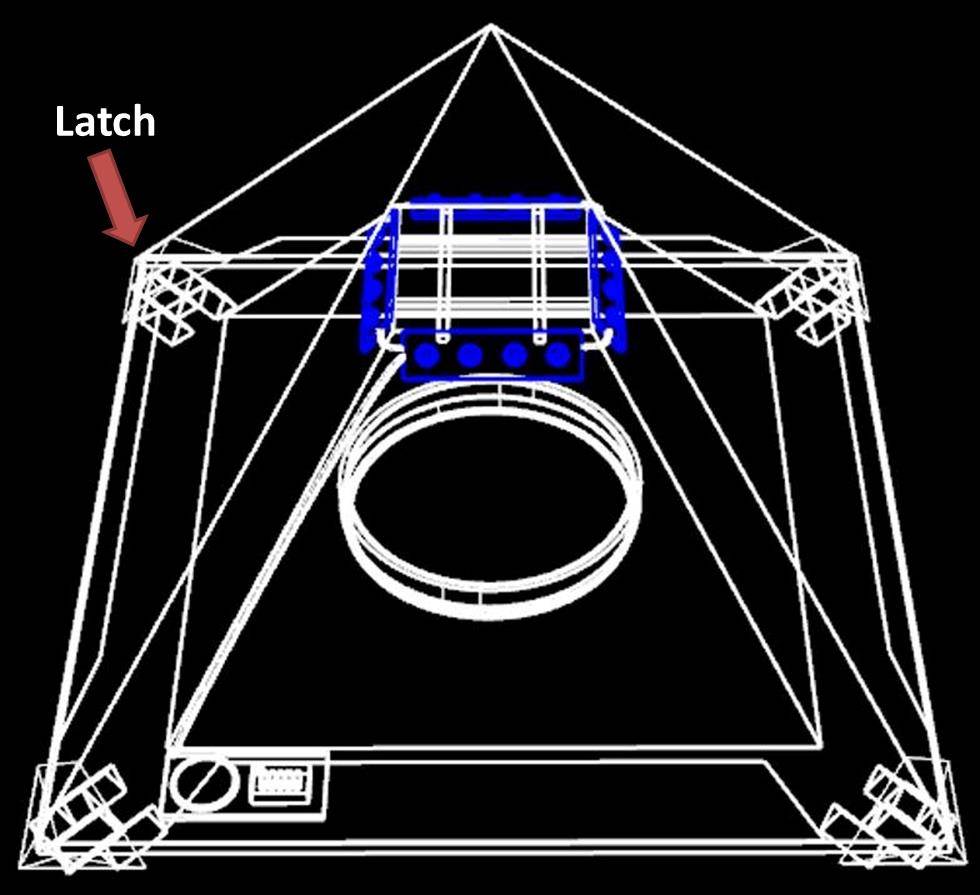Team:NCTU Formosa/project
From 2014.igem.org
| (1220 intermediate revisions not shown) | |||
| Line 1: | Line 1: | ||
{{:Team:NCTU Formosa/source/head}} | {{:Team:NCTU Formosa/source/head}} | ||
| - | + | ||
| - | {{:Team:NCTU Formosa/source/ | + | {{:Team:NCTU Formosa/source/header0}} |
{{:Team:NCTU Formosa/source/cover-project}} | {{:Team:NCTU Formosa/source/cover-project}} | ||
{{:Team:NCTU Formosa/source/card}} | {{:Team:NCTU Formosa/source/card}} | ||
| + | {{:Team:NCTU Formosa/source/header-project}} | ||
| + | |||
| + | |||
| + | |||
| + | <div style="width:70%;margin:0px auto;"> | ||
| + | {{:Team:NCTU Formosa/source/introo}} | ||
| + | </div> | ||
| + | |||
<div class="li"><div class="card"> | <div class="li"><div class="card"> | ||
| - | |||
| - | |||
| - | <p> | + | ===Motivation=== |
| + | ====A Serious Problem==== | ||
| + | <p>From ancient times to the present day, harmful insects always greatly affect our daily life, and we don’t have any appropriate solution to these troubling insects. Every year, harmful insects bring significant economic loss to agriculture, which seriously disturb people's livelihood and economy. </p><p>Take Brazil as an example, where the '''agricultural loss''' can reach up to''' 11 billion US dollars''' because most economic crops here such as coconut, coffee, and sugarcane are under serious insects attack. To control these obnoxious insects, '''1.4 billion''' has to be invested to purchase insecticides annually. Terrible as it may seem, Brazil is just one of the many cases in the world! The truth is that farmers worldwide are doing the same thing! To ensure good harvest, they use '''pesticides''' without much consideration about its side effects. In other words, a great amount of insecticides containing '''toxic substances''' is discharged to the environment every day. Obviously, it’s never a good solution. | ||
| + | </p> | ||
| + | [[File:2014NCTU Formosa project Fig 1-1-1.png|center|thumb|1200px| Fig.1-1-1 Losses caused by pests in Brazil. This chart demonstrates the losses of various crops caused by pests.]] | ||
| - | |||
| - | + | <p>Also, there is a data about the '''IPM (Integrated pest management)''' in USA. Integrated pest management, which is defined as integration of pest control based on predicted economic, ecological and sociological consequences, makes maximum use of naturally occurring control agents, including weather, disease organisms, predators and parasites.In brief,IPM means the ability to control harmful insects.The lower the number is, the more efficient we are able to control the pests in the evaluated area. In the data, we can see that crops are planted in lots of areas in USA.There are several kinds of plants such as corn and soybean which suffer from insect damage. Since we can only control the insect damage efficiently within a small, limited area. Therefore, as the production areas expand to an extent, the effect of control declines exponentially. Even though the production areas become larger, the total production might be lower.</p> | |
| - | </ | + | <p> |
| + | Therefore, what we need is a brand new method to solve this problem. </p> | ||
| + | [[File:2014NCTU Formosa project Fig 1-1-2.png|center|thumb|1200px| Fig.1-1-2 This chart demonstrates IPMs of the various areas of different crops planted in the USA.]] | ||
| + | <p></p> | ||
| - | + | ====Common Solutions==== | |
| + | =====Chemical Control Method===== | ||
| + | <p> | ||
| + | Because of insects damage, human tried lots of ways to kill these harmful insects. In the 15<sup>th</sup> century, people used pesticide containing '''heavy metal''' such as Arsenic, Mercury and Plumbum to kill harmful insects, which was a catastrophe to the environment. Pesticides became more powerful along with the development of modern technology. In the 20<sup>th</sup> century, the agriculture prospered rapidly owing to the evolution of pesticides. But the pesticides are not only fatal to the insects but also harmful to the human body. People found this problem after several decades. The '''toxin''' of the pesticides will remain in creatures through the '''food chain''' and enter the '''human body''' eventually. </p> | ||
| - | |||
| - | |||
| + | [[File:2014NCTU Formosa project Fig 1-1-3.png|center|400px|thumb|Fig.1-2-1 Human health and environmental cost from pesticides in the United States is estimated at $9.6 billion. ]] | ||
| + | '''Damage to Human Body''' | ||
| + | <p> Pesticides includes herbicides, insecticides, fungicides and rodenticides, which will kill weeds, insects, fungus, rodents and others. In our project, we refer to insecticides as pesticides. The use of toxic pesticides to manage insect problems has become a common practice around the world. However, pesticides cause serious '''human health hazards''', ranging from short-term impacts such as headaches and nausea to chronic impacts like cancer and reproductive harm. There are also many researches revealing that exposure to pesticides will disrupt the endocrine system, the reproductive system and embryonic development.</p> | ||
| + | '''Damage to the Environment''' | ||
| + | <p>Pesticides pollute the environment such as threatening '''biodiversity''' and '''weakening the natural systems'''. Pesticides have led to abnormally high mortality of America's honeybees. The population of bees has dropped by 29 % to 36 % each year since 2006. To our amazement, approximately 1/3 of the food we eat depends on bees for pollination!</p> | ||
| + | <p>Some scientists believe that amphibians and bats have become more susceptible to deadly diseases because their immune systems are weakened by pesticides. Pesticides also contaminate waterways and endangered fish and birds, causing '''ecological damage'''.</p> | ||
| - | + | =====Biological Control Method===== | |
| - | <p> | + | <p>Since most chemical control methods are poisonous to the environment, humans began to look for alternative solutions. One of the best known example is bacillus thuringiensis (Bt), which can efficiently kill insects with its crystal proteins. However, recent researches have shown that more and more insects have been '''resistant''' to this kind of protein.</p> |
| - | [[File: | + | <p>Chemical control methods have caused fatal environmental damage and insects have grown resistant to both the chemicals substances and Bt. It is, however, not too late to improve this situation. We can create an agricultural revolution with our new method! </p> |
| + | [[File:2014NCTU Formosa project Fig 1-1-4.png|center|500px|thumb|Fig.1-2-2 Comparison of both solutions. ]] | ||
| - | <p> | + | <p>Pheromone trap is currently the most novel method to resolve insect damage problems. What's more, pheromone is a '''pollution-free''' substance that is produced by the insects, meaning that insects '''cannot resist''' it. That's why we take biological synthesis of pheromone in ''E.coli'' to solve the problem. </p> |
| - | + | ====The Pheromone Trap==== | |
| + | =====Introduction of Pheromones===== | ||
| + | <p>A pheromone is a secreted or excreted chemical factor that triggers a '''social response''' among members of the '''same species'''. Pheromones are capable of acting outside the body of the secreting individual to impact the behavior of the receiving individuals. </p> | ||
| - | [[File: | + | <p>There are many kinds of pheromones such as alarm pheromones, food trail pheromones, sex pheromones, and many others that affect behavior or physiology. </p> |
| + | |||
| + | <p>Sex pheromones are an important factor in finding a mating partner. When a female releases chemicals, the mating search is initiated, and the male moths begin their upwind motion toward their potential partner. Pheromones have the ability to propel '''long-distance''' attraction and are emitted by the abdominal glands of female insects in most cases.</p> | ||
| + | <br> | ||
| + | <br> | ||
| + | |||
| + | =====How to Produce Pheromones===== | ||
| + | <p> | ||
| + | There are 2 main ways to produce pheromones. One through chemical synthesis, and the other through biosynthesis approach. | ||
| + | </p> | ||
| + | |||
| + | <p> | ||
| + | '''Chemical Synthesis Approach Used in Factory for Massive Production''' | ||
| + | </p> | ||
| + | <p> | ||
| + | It is '''difficult''' to make pheromone with a chemical synthesis approach. This approach requires many kinds of chemical compound which may cause '''pollution''' to the environment. Furthermore, the control of reacting condition may consume a lot of '''energy'''. An example of chemical synthesis approach: Leafroller moth, ''Bonagota cranaodes''.</p> | ||
| + | [[File:Chemical synthesis approach.png|500px|thumb|center|Fig.1-3-1 If we want to produce the pheromone of Leafroller moth (''Bonagota cranaodes'') by chemical synthesis approach, we have to purchase expensive equipment to control the conditions. And it may produce toxic byproducts.<sup>(34)</sup>(Paulo H. G. Zarbin et al. 2007) ]] | ||
| + | |||
| + | <p> | ||
| + | '''Simulating the Biosynthetic Pathway in Insects with ''E.coli'''''</p> | ||
| + | <p>Biosynthesis approach requires the cooperation of different enzymes, which is '''too complicated''' for ''E.coli'' to carry out. In addition, ''E.coli'' lacks Glycoproteins for posttranslational modification. Therefore, it is nearly impossible for ''E.coli'' to produce pheromones.</p> | ||
| + | |||
| + | [[File:Gypsy moth pheromone biosynthesis.png|600px|thumb|center|Fig.1-3-2 If we want to produce the pheromone of Gypsy moth, ''Lymantria dispar''. We have to pass at least four complicated pathways. That will be highly stressful for ''E.coli'', and it may also cause low efficiency of producing pheromone.<sup>(35)</sup>(Russell Jurenka, 2004)]] | ||
| + | <p> | ||
| + | '''Difficulty and Disadvantage of Pheromone Production''' | ||
| + | </p> | ||
| + | <p>As mentioned above, pheromone is '''too complicated''' to be produced either artificially or bio-synthetically. Although the cost of artificial chemical synthesis can be lowered through massive production, the '''environmental damage''' it causes is fatal. With that said, we decided to find an easier and better way to reach our goal.</p> | ||
| + | |||
| + | ====PBAN- The Solution==== | ||
| + | |||
| + | To solve the impossibility of biologically synthesizing pheromone with ''E.coli'', we found a feasible solution. As mentioned above, our method should be '''pollution-free''', '''efficient''', '''insect resistance-free''', and '''cheap'''. Combining all these advantageous elements, we introduce you '''PBAN'''. Click the photos to learn more! | ||
| + | |||
| + | |||
| + | <div style="width:100%"> | ||
| + | {{:Team:NCTU Formosa/source/project/test3}} | ||
| + | </div> | ||
| - | |||
| - | |||
======Reference====== | ======Reference====== | ||
<div class="ref"> | <div class="ref"> | ||
<ol start="1"> | <ol start="1"> | ||
| - | |||
| - | |||
| - | |||
| - | |||
| - | |||
| - | |||
| - | |||
| - | |||
| - | </ | + | <li>Cabbage Moth - Caterpillar". Habitas.org.uk. Retrieved 2014-08-11.</li> |
| - | </div> | + | <li>Interesting (To Us) Photos From The Garden". Meades.org. Retrieved 2011-08-11.</li> |
| + | <li>RXwildlife Sightings » Blog Archive » More Emergence". Rxwildlife.org.uk. 2009-06-03. Retrieved 2011-08-11.</li> | ||
| + | <li>Practice Organic Cabbage Worm Control for a Chemical-Free Garden, by Barbara Pleasant, March 25, 2013</li> | ||
| + | <li>2003-2009 Project «Interactive Agricultural Ecological Atlas of Russia and Neighboring Countries. Economic Plants and their Diseases, Pests and Weeds</li> | ||
| + | <li>Report of a Pest Risk Analysis Helicoverpa armigera, Hübner, 1808</li> | ||
| + | <li>UC IPM Pest Management Guidelines: | ||
| + | Cotton, http://ucanr.edu/sites/ipm/pdf/pmg/pmgcotton.pdf</li> | ||
| + | <li>Michigan State University’s invasive species factsheets(Oriental leafworm Spodoptera litura) | ||
| + | , http://www.ipm.msu.edu/uploads/files/Forecasting_invasion_risks/orientalLeafworm.pdf</li> | ||
| + | <li>Effect of tetra hydroxyl-ρ-benzoquinone on growth and | ||
| + | metamorphosis of Spodoptera litura Fabr. | ||
| + | (Lepidoptera: Noctuidae) larvae, Sujata Magdum | ||
| + | , Seema Gupta | ||
| + | </li> | ||
| + | <li> Espinosa, A. and A.C. Hodges University of Florida, Spodoptera litura, BUGWOODWiki, http://wiki.bugwood.org/Spodoptera_litura.</li> | ||
| + | <li>OROKIN, Fire Ant Anatomy, http://www.orkin.com/ants/fire-ant/fire-ant-anatomy</li> | ||
| + | <li>Wikipedia, Red imported fire ant | ||
| + | http://en.wikipedia.org/wiki/Red_imported_fire_ant</li> | ||
| + | <li> | ||
| + | Organic Gardening.com/learn-and-grow/fire-ant-control</li> | ||
| + | <li>Cram101 Textbook Reviews, Life: The Science of Biology 8th Edition</li> | ||
| + | <li> | ||
| + | Wikipedia, Aedes aegypti | ||
| + | , http://en.wikipedia.org/wiki/Aedes_aegypti</li> | ||
| + | <li>National Pesticide Information Center, Mosquito Control Methods</li> | ||
| + | <li> | ||
| + | BugwoodWiki | ||
| + | , Cutworms, by Dr. Steve L. Brown, Dr. Will Hudson</li> | ||
| + | <li>Eliminate Cutworms Using Natural Pest Control By Susan Glaese | ||
| + | March/April 1987</li> | ||
| + | <li> | ||
| + | Wikipedia, Lymantria dispar dispar | ||
| + | , http://en.wikipedia.org/wiki/Lymantria_dispar_dispar</li> | ||
| + | <li> | ||
| + | FACT SHEET : | ||
| + | GYPSY MOTH, http://www.metro-forestry.com/wp-content/uploads/2010/02/FactSheet_Gypsy-Moth.pdf</li> | ||
| + | <li> | ||
| + | Planet Natural, GYPSY MOTH</li> | ||
| + | <li> | ||
| + | Larry P. Pedigo, G. David Buntin, Handbook of Sampling Methods for Arthropods in Agriculture</li> | ||
| + | <li>L. A. Hull, D. G. Pfeiffer & D. J. Biddinger, Apple Direct Pests</li> | ||
| + | |||
| + | <li> | ||
| + | IPM, obliquebanded leafroller, http://www.nysipm.cornell.edu/factsheets/treefruit/pests/oblr/oblr.asp</li> | ||
| + | <li> | ||
| + | UC IPM Online, Leafrollers on Ornamental and Fruit Trees, Publication 7473 September 2010</li> | ||
| + | <li>Tan Koon San, Dynastic China: An Elementary History</li> | ||
| + | |||
| + | <li>Pogue, Michael. "A review of selected species of Lymantria Huber [1819]". Forest Health Technology Enterprise Team. Retrieved September 14, 2012.</li> | ||
| + | |||
| + | <li>Laurence Mousson, Catherine Dauga, Thomas Garrigues, Francis Schaffner, Marie Vazeille & Anna-Bella Failloux (August 2005). "Phylogeography of Aedes (Stegomyia) aegypti (L.) and Aedes (Stegomyia) albopictus (Skuse) (Diptera: Culicidae) based on mitochondrial DNA variations". Genetics Research </li> | ||
| + | <li>M. S. Ascunce et al., “Global Invasion History of the Fire Ant Solenopsis invicta”, Science, vol. 331, no. 6020, pp. 1066 - 1068, 2011</li> | ||
| + | |||
| + | <li>Scientists suggest fighting fire ants with ice By Chiu Yu-Tzu / STAFF REPORTER</li> | ||
| + | <li>Capinera, J.L. 1999. Fall armyworm Spodoptera frugiperda (J.E. Smith) (Insecta: Lepidoptera: Noctuidae)</li> | ||
| + | <li>Helicoverpa Diapause Induction and Emergence Tool | ||
| + | Introduction to the Helicoverpa armigera Genome Project | ||
| + | Helicoverpa armigera Genome Project updates on InsectaCentral | ||
| + | Helicoverpa Genome Project database on-line | ||
| + | Lepiforum | ||
| + | Funet Taxonomy | ||
| + | Fauna Europaea</li> | ||
| + | |||
| + | <li>Authored by W. H. Reissig. | ||
| + | |||
| + | Published by the New York State Agricultural Experiment Station, Geneva, A Division of the New York State College of Agriculture and Life Sciences, A Statutory College of the State University, Cornell University, Ithaca. Funded in part by an Extension Service-USDA, IPM Grant.</li> | ||
| + | <li>Paulo H. G. Zarbin; José A. F. P. Villar; Arlene G. Corrêa, Insect pheromone synthesis in Brazil: an overview, Journal of the Brazilian Chemical Society, vol.18 no.6 São Paulo 2007</li> | ||
| + | |||
| + | </ol></div> | ||
| + | |||
</div></div> | </div></div> | ||
| + | <div class="li"><div class="card"> | ||
| + | ===PBAN ( Pheromone Biosynthesis Activating Neuropeptide )=== | ||
| + | <p>PBAN (Pheromone Biosynthesis Activating Neuropeptide) is a kind of peptide that can activate biosynthesis of pheromones of specific insects. Once a PBAN binds with the''' G-protein coupled receptor''' located at an insect’s pheromone gland, it will send a signal to activate kinase and phosphatase, which in turn activates other enzymes that participate in the biosynthesis of insect sex pheromones. These pheromones are eventually emitted<sup>(35)</sup>.</p> | ||
| + | |||
| + | <p>In nature, '''female insects''' such as '''moths release PBAN''' to '''stimulate the synthesis of pheromones''' in order to attract male moths during mating. PBAN can also facilitate the release of non-sex pheromones such as trail pheromones for ants. Overall, this kind of natural substance, PBAN, has many advantages in the following, which can complete our goals perfectly. | ||
| + | </p> | ||
| + | |||
| + | [[File:2014NCTUGprotein.jpg|800px|thumb|center|Fig.2-1-1 This is the biosynthetic pathway of pheromones. Once PBAN comes in contact with the PBAN receptor, the receptor will send a signal to activate other enzymes that participate in the biosynthesis of insect pheromones.]] | ||
| + | |||
| + | ====Features of PBAN==== | ||
| + | |||
| + | <p>1. '''Species-specific''': PBAN is species-specific just like pheromones, meaning that every kind of insect produces specific PBAN that only binds with its specific receptor, resulting in the production of a particular pheromone. </p> | ||
| + | |||
| + | <p>2. '''Small and simple''': The coding sequence for a PBAN is only around 100 base pairs. For ''E.coli'', 100 base pairs is totally within its working capacity. Therefore, ''E.coli'' can be a low-cost PBAN factory. By transforming the DNA sequences for different PBAN into the ''E.coli'', we can even gain a variety of PBANs. </p> | ||
| + | |||
| + | <p>3. '''Secreted directly''': Because PBAN can be synthesized by the insect itself, the insect would not form a resistance to it compare to use pesticide. </p> | ||
| + | |||
| + | <p>In conclusion, using PBAN is totally a environmental friendly way for solving harmful insects problems with easily triggering the production of pheromone by contacting with PBAN receptors. </p> | ||
| + | </div></div> | ||
<div class="li"><div class="card"> | <div class="li"><div class="card"> | ||
| - | === | + | ===Main Idea=== |
| - | + | <p>We plan to produce PBANs through ''E.coli'' and make the PBAN come in contact with the target insect. The target insect will then start producing pheromones and attract more target insects.</p> | |
| - | + | ||
| - | + | ====Pheromone Production==== | |
| - | + | <p>Before we could employ PBAN to accomplish our goals, we need to obtain enough background knowledge to evaluate the workability of our plan through paper research. First, we had to confirm whether an insect can take in vitro PBAN and allow it to function. From “Pheromonotropic Activity of Naturally Occurring Pyrokinin Insect Neuropeptides (FXPR-Lamide) in ''Helicoverpa zea''”<sup>(37)</sup>, this method has been proven possible. In this experiment, 0.05 pmol to 200 pmol of PBAN had been injected in to corn earworm and the amount of pheromone produced had been measured. The result (Fig.1-2-4) showed that PBAN produced by insects itself can effectively increase the production of pheromone. The maximized amount of pheromone production was reached with only "10 pmol" of PBAN. This experiment means as long as '''PBAN enters''' '''the body of the insect''', it highly possible that''' PBAN''' can '''stimulate the production of pheromone'''.</p> | |
| - | + | [[File:PBAN圖表.jpg|thumb|950px|center|Fig.3-1-1 Effect of dose of Hez-PBAN on stimulation in vivo pheromonotropic activity in vitrugin females of H. zea (bars indicate SEM. n=8). This figure shows that PBAN can efficiently stimulate pheromone production in just a small amount (10 pmol).(Rellal.Abernathy et al, 1995)]] | |
| - | ==== | + | ====A Problem of Degradation by Peptidase==== |
| - | + | <p> The only problem for us to use PBAN is that PBAN would be '''degraded''' quickly in an insect’s body. In order to understand this problem, we searched some former papers and we found another paper from Peptides, “Enhanced oral availability/pheromonotropic activity of peptidase-resistant topical amphiphilic analogs of pyrokinin/PBAN insect neuropeptides<sup>(36)</sup> .” In this experiment, ''Heliothis virescens'' was the experimental insect and amphiphilic analogs of pyrokinin/PBAN were used instead of natural PBAN. This way, the analog can resist peptidase, as shown in the graph below. The amount of the natural PBAN decreases quickly while the analogs degrades slowly (Fig.3-2-1). However, we found the amphiphilic analogs of '''pyrokinin/PBAN peptide''' requires many special artificial modification, which means ''E.coli'' absolutely cannot produce this artificial PBAN that can easily resist peptidase. Thus, we need more brain storming to think of a way to use PBAN even if it may be degraded by peptidase.</p> | |
| - | + | [[File:PBAN圖表3-2.jpg|450px|thumb|center|Fig.3-2-1 Stability of the natural pyrokinin/PBAN analog LPK, and the peptidase-resistant pyrokinin/PBAN analogs Hex-Phe-Thr-Hyp-Trp-Gly-NH2 and Hex-Phe-Thr-Oic-Trp-Gly-NH2 to hydrolysis by peptidases bound to corn earworm (H. zea) Malpighian tubule tissue. Measurement of the amount of remaining peptide was made by HPLC at 30, 60, and 120 min. The data points represent the means of at least three replicates.(Ronald J. Nachmana, Peter E.A. Teal, Allison Strey, 2002)]] | |
| - | + | ====Our Solution==== | |
| - | + | <p>The results above did not sound good to us, but there was another experiment that interested us in the same research. Researchers also conducted '''oral test''' with '''artificial PBAN'''/pyrokinin analogs (Fig.3-3-1), in this experiment, they fed moths with '''sugar solution''' which contained their PBAN analogs, and measured the amount of pheromone produced over time. (Blank: natural PBAN in low concentration) This result inspired us. Although natural PBANs can’t be maintained for a long time in moth’s body, we could solve this problem by simply '''feeding moths''' with '''high concentration PBANs''' continually.</p> | |
| - | + | [[File:WIKI 3-3.jpg|450px|thumb|center|Fig.3-3-1 Amount of pheromone, relative to the maximum pheromone amount induced by injected PBAN, produced by Hyp-analog and Oic-analog, 1.5, 3, 4, and 6h following oral administration. Dotted line at 100% denotes maximal pheromone production of injected PBAN (positive control). This figure shows a very important information that blank (natural PBAN in low concentration:50 pmol, the blank was measured when it was 2 hr after feeding with nature PBAN) still has some ability to stimulate pheromone production. Thus, we decided to try to feed the female target insects with high concentration PBAN continuously.(Ronald J. Nachmana, Peter E.A. Teal, Allison Strey, 2002) ]] | |
| - | + | ||
| - | + | <p> Thus, as long as '''female moths''' suck the high concentration''' PBAN''' solution''' continuously''', the PBAN in the moths’ body will be replenished continually even if peptidase degradation occurs. Then, there is a high possibility of PBAN being absorbed by the moths’ body from the digestive system and succeed in stimulating the pheromone gland. Thus, if we feed the female insects with high concentration PBAN solution continuously, the female insects will produce pheromones for us, which theoretically solves the problem of PBAN's inability to maintain for a long time in the insects’ body. As to how we produce PBAN and apply our concept to capture wanted harmful insects, we will explain in the following.</p> | |
| - | In our project, we | + | ====How We Are Going to Use PBAN?==== |
| + | [[file:How_we_are_going_to_use_PBAN.jpg|center|thumb|700px| Fig.3-4-1 Overview of our project.]] | ||
| + | <p>In our project, we will biologically synthesize PBAN with the ''E.coli''. We store the PBAN inside a trapping device [https://2014.igem.org/Team:NCTU_Formosa/project#Device (check this out at our Device page)]. In the device, there will be appropriate lighting and nutrient sources that will attract insects. </p> | ||
| + | <p>Once an insect is attracted into our device and ingests the nutrient sources we provide, it will also inevitably come in contact with our PBAN. As the PBAN works and activates the pheromone synthesis of the attracted insect, more of this species of insect’s counterparts will be attracted and later captured. </p> | ||
| - | + | <p>Owing to the first feature mentioned above, PBAN is species-specific, which means that it doesn't matter if other kinds of insects fly into our device and eat the PBAN. This is because the insects we don't want to catch will not be stimulated by PBAN to produce pheromone. Therefore, the PBAN is only for what we want to catch, and we are sure that our method won't affect other kinds of insects. </p> | |
======Reference====== | ======Reference====== | ||
<div class="ref"> | <div class="ref"> | ||
| - | <ol start=" | + | <ol start="35"> |
| - | <li> | + | <li>Russell Jurenka, Insect Pheromone Biosynthesis, Topics in Current Chemistry (2004) 239: 97– 132 |
| - | <li> | + | DOI 10.1007/b95450, 2004</li> |
| - | </li> | + | <li>Ronald J. Nachmana, Peter E.A. Teal, Allison Strey, Enhanced oral availability/pheromonotropic activity of peptidase-resistant |
| - | </ol> | + | topical amphiphilic analogs of pyrokinin/PBAN insect neuropeptides, Peptides 23 (2002) 2035–2043.</li> |
| - | </div> | + | <li>RELLA L. ABERNATHY, RONALD J. , PETER E. A. TEAL, OKITSUGU YAMASHITAS |
| + | AND JAMES H. TUMLINSON, Pheromonotropic Activity of Naturally Occurring | ||
| + | Pyrokinin Insect Neuropeptides (FXPRLamide) | ||
| + | in Helicoverpa zea, Peptides, Vol. 16, No. 2, pp. 215-219, 1995.</li> | ||
| + | </ol></div> | ||
| + | |||
</div></div> | </div></div> | ||
| + | <div class="li"><div class="card"> | ||
| + | ===Biobrick Design=== | ||
| + | ====Basic Biobrick Design==== | ||
| + | [[File:HALFPBAN.png|400px|thumb|center|Fig.4-1-1 This is our basic design of biobrick.]] | ||
| + | We searched the DNA sequences of the PBANs of many kinds of insects on NCBI, then compared them to the amino acid sequences from papers so that we can select the DNA fragments that directly correspond to gland-stimulating function. By ligating the constitutive promoter (BBa_J23101), ribosome binding site (BBa_B0034) and PBAN DNA sequence with a terminator (BBa_J61048) at last (we delimit this sequence as basic part), we were able to make ''E.coli'' '''directly''' produce these PBANs '''continuously''' instead of the original complex process of PBAN biosynthesis in insects. | ||
| + | |||
| + | ====Multifunctionality==== | ||
| + | [[File:LONGPBAN.png|750px|thumb|center|Fig.4-2-1 Best Potential of Our PBAN Biobrick - Multifunctional.]] | ||
| + | |||
| + | We can assemble these basic parts together easily because the number of base pairs of these basic parts are '''small'''. We can assemble different basic parts that contain different PBAN DNA sequences to resolve different insect problems. Therefore, our biobrick design can be '''customized''' according to the users' needs. For instance, if there is a farm harmed by 3 kinds of moths: ''Lymantria dispar'', ''Spodoptera litura'' and ''Mamestra brassicae'', what we have to do is to ligate the PBAN DNA sequence of 3 basic parts into one plasmid and let the ''E.coli'' express these PBANs. After these three kinds of moth ingest these three kinds of PBANs, subsequently, these 3 species of moths will produce their own pheromones to attract their same-species counterparts. To put it '''simply''', our PBAN basic parts can be assembled together with any combination in infinite possibility. | ||
| + | |||
| + | For even more creative ideas, each of the PBAN basic parts can use different promoters, RBS and terminators to make many '''different regulation'''. Thus, not only can we produce many different PBANs with just one strain of ''E. coli'', but these parts can be regulated to our desire. Thus, our PBAN biobricks really have infinite potential! | ||
| + | |||
| + | </div></div> | ||
<div class="li"><div class="card"> | <div class="li"><div class="card"> | ||
| - | === | + | ===Device=== |
| + | In order to actually attract and capture the insect, we take the different weather conditions such as '''light''' and '''temperature''' into consideration. The different conditions will change the efficiency of insect attraction. Therefore, we design a device that can be used in different conditions, which would allow farmers to choose the best way for their local condition. | ||
| + | [[File:NCTU_Formosa_2014_Project_Device1.jpg|thumb|center|700px|Fig.5-1-1 Our blue light pyramidal device.]] | ||
====Introduction==== | ====Introduction==== | ||
| - | <p> | + | <p> |
| + | Since insects behave widely different to the gravity force, we design a device which could catch specific kinds of insect species that we want. For example, ''Agrotis ypsilon'' (Rottemberg) and ''Spodoptera litura'' fall into the kind of moth that have negative geotaxis '''(antigravity, tendency to fly upwards)'''. Thus, we made a trap with accessible pathway at the bottom. Once an insect enters the device, it could only go up and be trapped inside the pyramid. However, after field investigation, we found some insects still escape from the device. Then we came up with a new version trap with doubled layers, inner shell and outer shell. | ||
| + | <br><br><br><br> | ||
| + | </p> | ||
| - | <p>''' | + | ====Assembling Process==== |
| + | <p> | ||
| + | Before the detailed description of how we design our device, we can show you a simple animation of the '''assembling process''' of our device. | ||
| + | As you can see, our device is very easy to use. Just assemble the outer shell, inner shell (containing PBAN) and tenons together to complete the device. Then, you can put the device at where you want to attract the harmful insects. </p><div style="margin:0pt auto; width:50%;"></div> | ||
| + | |||
| + | <div style="margin:0pt auto; width:50%;">{{:Team:NCTU Formosa/source/project/Device Assembling Process}}</div> | ||
| + | <br><br><br><br><br> | ||
| - | + | ====Mechanism of Attraction==== | |
| - | + | {{:Team:NCTU Formosa/source/mechanism}} | |
| - | + | <p> | |
| + | As you can see, we divide our design into two parts-'''exterior and interior'''. The exterior is just like the appearance of a pyramid, and the interior is designed to accommodate PBAN. At the beginning of using the device, we turn on the blue light LEDs to attract the target harmful insects. When the target female insects are stuck in the interior and eat the food mixed with PBAN solution, they will release pheromones, and attract same-species counterparts. Even if we turn off the blue light, our device can attract many target male insects because the female insects inside our device is still in rut and releasing sex pheromone to attract their mates. | ||
| + | After the harmful insects go into our device, the design of our device will take advantage of their habit. Insects always '''fly high to escape''' so they will be '''stuck in the top of our device'''. </p> | ||
| - | |||
| - | + | <br><br> | |
| - | < | + | |
| - | + | ||
| - | + | ||
| - | + | ||
| - | + | ||
| - | + | ||
| - | + | ||
| + | ====Device Design==== | ||
| + | <p>More detail information about how we design our pyramidal device can downloaded in the file below.</p> | ||
| - | [ | + | <ul class="download"> |
| + | [https://drive.google.com/file/d/0ByIV-UvWEH5cLXJrbnFtc014bHM/view Device_Design_Download] | ||
| + | </ul> | ||
| - | ====Design==== | + | ====Process to Assemble Our Device & Main Idea of Our Device Design==== |
| - | + | <br> | |
| - | + | '''Outer Shell:''' | |
| - | + | <table width="100%;"> | |
| - | [[File: | + | <td>[[File:Outer_Shell.JPG|350px|thumb|center|Fig.5-5-1 Outer shell real product.]]</td> |
| - | + | <td>[[File:Outer_Shell_1.JPG|270px|thumb|center|Fig.5-5-2 Outer shell schematic diagram.]]</td> | |
| - | [[File: | + | </table> |
| - | + | ||
| - | + | ||
| - | |||
| + | <p> | ||
| + | We shaped the device into a pyramid. Its special layout also enriches the device with mysterious colors. </p> | ||
| - | + | <p> | |
| - | < | + | 1. The outer shell is composed of 4 triangular acrylic planes which has a trapezoid entrance. When insects come inside and ingest PBAN solution, they will release pheromone. With the pheromone scent, our device can trap and collect more and more insects of the same species. </p> |
| - | + | ||
| - | + | ||
| - | + | ||
| - | + | ||
| - | + | ||
| - | + | ||
| - | + | ||
| - | + | ||
| - | + | ||
| - | + | ||
| - | < | + | <br> |
| + | '''Inner Shell:''' | ||
| + | <table width="100%;"> | ||
| + | <td>[[File:Inner_Shell.JPG|350px|thumb|center|Fig.5-5-3 Inner shell real product.]]</td> | ||
| + | <td>[[File:Inner_Shell_1.JPG|270px|thumb|center|Fig.5-5-4 Inner shell schematic diagram.]]</td> | ||
| + | </table> | ||
| + | <p> | ||
| + | Similar to the outer one, the inner shell is also composed of 4 trapezoid planes and is removable from the base. The only difference is that its top is not sealed so to allow entry of the captured insects.</p> | ||
| + | |||
| + | <p> | ||
| + | 1. There would be a container of '''PBAN''' solution placed at the bottom. </p> | ||
| + | <p> | ||
| + | 2. '''Blue LED light bulbs''' will be installed around the top of the inner shell plane to attract the first female insect. </p> | ||
| + | <br> | ||
| + | '''Latch:''' | ||
| + | <table width="100%;"> | ||
| + | <td>[[File:Tenon.JPG|350px|thumb|center|Fig.5-5-5 Latch real product.]]</td> | ||
| + | <td>[[File:Tenon_1.JPG|270px|thumb|center|Fig.5-5-6 Latch schematic diagram.]]</td> | ||
| + | </table> | ||
| + | |||
| + | |||
| + | <p> | ||
| + | A part to stabilize the pyramid.</p> | ||
| + | <p> | ||
| + | 1. Stabilize 4 corners of the bottom.</p> | ||
| + | <p> | ||
| + | 2. To make sure the outer shell can combine with the inner one tightly.</p> | ||
| + | |||
| + | <br><br><br><br><br> | ||
| + | |||
| + | ====Advantages==== | ||
| + | |||
| + | |||
| + | <p>1. We successfully trap the targeted female moth in our device, forcing them to release sex | ||
| + | pheromone by ingesting PBAN, which results in attracting more insects of the same kind.<br><br></p> | ||
| + | <p></p> | ||
| + | |||
| + | <p>2. The inner shell is removable so it’s easier to replenish new PBAN solution and the food for the insect.<br><br></p> | ||
| + | <p></p> | ||
| + | |||
| + | <p>3. Compared to conventional light bulbs, LED is much''' brighter''' and '''conserves more energy'''. It could powered by battery so it’s also easier in practical use.<br><br></p> | ||
| + | <p></p> | ||
| + | |||
| + | <p>4. The PBAN system can run '''day and night'''. Its function won’t be affected by sunlight.<br><br></p> | ||
| + | <p></p> | ||
| + | |||
| + | <p>5. Pyramid is a good-looking form and can enrich the entire device with a technological feeling.<br><br></p> | ||
| + | |||
| + | </div></div> | ||
<html> | <html> | ||
| - | + | <span style="margin-left: 87%;"> | |
| - | + | <a href="http://info.flagcounter.com/buEy"><img src="http://s09.flagcounter.com/count/buEy/bg_FFFFFF/txt_000000/border_CCCCCC/columns_3/maxflags_12/viewers_0/labels_0/pageviews_0/flags_0/" alt="Flag Counter" border="0"></a></span> | |
| - | </ | + | </html> |
Latest revision as of 03:59, 18 October 2014
Contents |
Motivation
A Serious Problem
From ancient times to the present day, harmful insects always greatly affect our daily life, and we don’t have any appropriate solution to these troubling insects. Every year, harmful insects bring significant economic loss to agriculture, which seriously disturb people's livelihood and economy.
Take Brazil as an example, where the agricultural loss can reach up to 11 billion US dollars because most economic crops here such as coconut, coffee, and sugarcane are under serious insects attack. To control these obnoxious insects, 1.4 billion has to be invested to purchase insecticides annually. Terrible as it may seem, Brazil is just one of the many cases in the world! The truth is that farmers worldwide are doing the same thing! To ensure good harvest, they use pesticides without much consideration about its side effects. In other words, a great amount of insecticides containing toxic substances is discharged to the environment every day. Obviously, it’s never a good solution.
Also, there is a data about the IPM (Integrated pest management) in USA. Integrated pest management, which is defined as integration of pest control based on predicted economic, ecological and sociological consequences, makes maximum use of naturally occurring control agents, including weather, disease organisms, predators and parasites.In brief,IPM means the ability to control harmful insects.The lower the number is, the more efficient we are able to control the pests in the evaluated area. In the data, we can see that crops are planted in lots of areas in USA.There are several kinds of plants such as corn and soybean which suffer from insect damage. Since we can only control the insect damage efficiently within a small, limited area. Therefore, as the production areas expand to an extent, the effect of control declines exponentially. Even though the production areas become larger, the total production might be lower.
Therefore, what we need is a brand new method to solve this problem.
Common Solutions
Chemical Control Method
Because of insects damage, human tried lots of ways to kill these harmful insects. In the 15th century, people used pesticide containing heavy metal such as Arsenic, Mercury and Plumbum to kill harmful insects, which was a catastrophe to the environment. Pesticides became more powerful along with the development of modern technology. In the 20th century, the agriculture prospered rapidly owing to the evolution of pesticides. But the pesticides are not only fatal to the insects but also harmful to the human body. People found this problem after several decades. The toxin of the pesticides will remain in creatures through the food chain and enter the human body eventually.
Damage to Human Body
Pesticides includes herbicides, insecticides, fungicides and rodenticides, which will kill weeds, insects, fungus, rodents and others. In our project, we refer to insecticides as pesticides. The use of toxic pesticides to manage insect problems has become a common practice around the world. However, pesticides cause serious human health hazards, ranging from short-term impacts such as headaches and nausea to chronic impacts like cancer and reproductive harm. There are also many researches revealing that exposure to pesticides will disrupt the endocrine system, the reproductive system and embryonic development.
Damage to the Environment
Pesticides pollute the environment such as threatening biodiversity and weakening the natural systems. Pesticides have led to abnormally high mortality of America's honeybees. The population of bees has dropped by 29 % to 36 % each year since 2006. To our amazement, approximately 1/3 of the food we eat depends on bees for pollination!
Some scientists believe that amphibians and bats have become more susceptible to deadly diseases because their immune systems are weakened by pesticides. Pesticides also contaminate waterways and endangered fish and birds, causing ecological damage.
Biological Control Method
Since most chemical control methods are poisonous to the environment, humans began to look for alternative solutions. One of the best known example is bacillus thuringiensis (Bt), which can efficiently kill insects with its crystal proteins. However, recent researches have shown that more and more insects have been resistant to this kind of protein.
Chemical control methods have caused fatal environmental damage and insects have grown resistant to both the chemicals substances and Bt. It is, however, not too late to improve this situation. We can create an agricultural revolution with our new method!
Pheromone trap is currently the most novel method to resolve insect damage problems. What's more, pheromone is a pollution-free substance that is produced by the insects, meaning that insects cannot resist it. That's why we take biological synthesis of pheromone in E.coli to solve the problem.
The Pheromone Trap
Introduction of Pheromones
A pheromone is a secreted or excreted chemical factor that triggers a social response among members of the same species. Pheromones are capable of acting outside the body of the secreting individual to impact the behavior of the receiving individuals.
There are many kinds of pheromones such as alarm pheromones, food trail pheromones, sex pheromones, and many others that affect behavior or physiology.
Sex pheromones are an important factor in finding a mating partner. When a female releases chemicals, the mating search is initiated, and the male moths begin their upwind motion toward their potential partner. Pheromones have the ability to propel long-distance attraction and are emitted by the abdominal glands of female insects in most cases.
How to Produce Pheromones
There are 2 main ways to produce pheromones. One through chemical synthesis, and the other through biosynthesis approach.
Chemical Synthesis Approach Used in Factory for Massive Production
It is difficult to make pheromone with a chemical synthesis approach. This approach requires many kinds of chemical compound which may cause pollution to the environment. Furthermore, the control of reacting condition may consume a lot of energy. An example of chemical synthesis approach: Leafroller moth, Bonagota cranaodes.
Simulating the Biosynthetic Pathway in Insects with E.coli
Biosynthesis approach requires the cooperation of different enzymes, which is too complicated for E.coli to carry out. In addition, E.coli lacks Glycoproteins for posttranslational modification. Therefore, it is nearly impossible for E.coli to produce pheromones.
Difficulty and Disadvantage of Pheromone Production
As mentioned above, pheromone is too complicated to be produced either artificially or bio-synthetically. Although the cost of artificial chemical synthesis can be lowered through massive production, the environmental damage it causes is fatal. With that said, we decided to find an easier and better way to reach our goal.
PBAN- The Solution
To solve the impossibility of biologically synthesizing pheromone with E.coli, we found a feasible solution. As mentioned above, our method should be pollution-free, efficient, insect resistance-free, and cheap. Combining all these advantageous elements, we introduce you PBAN. Click the photos to learn more!
-
Cabbage MothMamestra brassicae
-
Cotton bollwormHelicoverpa armigera (Hubner)
-
Oriental Leafworm MothSpodoptera litura
-
Red imported fire antSolenopsis invicta
-
Yellow fever mosquitoAedes (Stegomyia) aegypyi
-
Black cutwormAgrotis ipsilon
-
Gypsy MothLymantria dispar
-
LeafrollersStatherotis leucaspis Meyrick
-
SilkwormBombyx mori
Spread:This moths has a natural range across Europe, Asia, and North Africa.
Characteristics:The larva is green, khaki, grey-brown or brown with dark spots(1)(2)(3). The topside is darker than the bottom side and a yellow or light brown stripe goes round the middle portion by the spots.
Damage:The caterpillar of this species is seen as a pest for commercial agriculture. Often referred to as the "imported cabbageworm" they are a serious pest to cabbage and other mustard family crops. It can also be a pest of cultivated brassicas and sweet peas, but it feeds on a wide range of other plants.
Control: Organic controls(4) for cabbage worms include handpicking, excluding them with row cover barriers, or treating with a Bt pesticide. Cabbage worms are found throughout North America, and more than one species may be found in the same garden.
Spread:The pink bollworm has spread to cotton-growing regions throughout the world.
Characteristics: The larva is green, khaki, grey-brown or brown with dark spots(5). The topside is darker than the bottom side and a yellow or light brown stripe goes round the middle portion by the spots(32).
Damage: The cotton bollworm is a highly polyphagous species.[6] The most important crop hosts are tomato, cotton, pigeon pea, chickpea, sorghum and cowpea. Other hosts include groundnut, okra, peas, field beans, soybeans, lucerne, Phaseolus spp., other Leguminosae, tobacco, potatoes, maize, flax, Dianthus, Rosa, Pelargonium, Chrysanthemum, Lavandula angustifolia, a number of fruit trees, forest trees and a range of vegetable crops(6).
Control: Cultural controls, with the exception of the use of Bt cotton and the use of mating disruption and sprays of the Entrust formulation of spinosad are acceptable to use on organically grown cotton(7).
Spread:Widely distributed in Asia and Oceania.
Asia: Afghanistan, Bangladesh, Cambodia, China, Hong Kong, Indonesia, India, Iran, Japan, Laos, Malaysia, Myanmar, Nepal, North Korea, Oman, Pakistan, Philippines, Singapore, South Korea, Sri Lanka, Taiwan, Thailand, Vietnam. Oceania: Australia, Guam, New Caledonia, New Zealand, Micronesia, Papua New Guinea,
Samoa, other Pacific islands. United States: Hawaii(8).Characteristics: Adult moths measure between 15-20 mm (0.59-0.79 inches) in length and have a wingspan of 30-38 mm (1.18-1.5 inches). Forewings are gray to reddish-brown, with a complex pattern of creamy streaks and paler lines along the veins. Hind wings are grayish-white with grayish-brown margins. Males have a blue-grey band from the upper corner (apex) to the inner margin of each forewing. Larvae have bright yellow stripes along the back and the sides. Larval color varies from pale green to dark green(9)(31).
Damage: Oriental Leafworm Moth Spodoptera litura is a Noctuid moth which is considered as an agricultural pest. It is also known as the Cluster caterpillar, Cotton leafworm, Tobacco cutworm, and Tropical armyworm. It has a very wide host range of over 120 plant species, including: lettuce, cabbage, beetroot, peanuts, geranium, cotton, banana, fuchsias, acacia, African oil palm, amaranth, alfalfa, strawberry, sorghum, sugarcane, tomatoes, asparagus, apple, eggplant, beet, beans, broccoli, elephants ear, horsetail she oak, corn, flax, lantana, papaya, orange, mango, leek, among many others.
Control: The use of Bacillus thuringiensis (BT) may effectively control this pest. Other forms of biological, horticultural, and cultural control that have been studied include: planting near derris and garlic plants, breeding resistant plants from wild plants for example groundnuts from wild groundnuts, breeding resistant plants using bacterium Bacillus thuringiensis genes, using a Baculovirus, using the nematode Steinernema carpocapsae, and using the fly Exorista japonica(10).
Spread:The red imported fire ant, a eusocial species, are far more aggressive than most ant species. Animals, including humans, often encounter them by inadvertently stepping on one of their mounds, which causes the ants to swarm up the legs, attacking en masse. The ants respond to pheromones released by the first ant that attacks, thereafter stinging in concert(12).
Characteristics: Fire ants are red and black in coloration and, like all insects, they are protected by a hard exoskeleton and have six legs. Worker ants have round heads with mandibles, an armored thorax midsection and an abdomen, made up of the pedicle and the gaster. The head is typically copper brown in color. In addition to their mandibles, fire ant workers also possess an abdominal stinger(11)(29).
Damage: They are considered to be a pest, not only because of the physical pain they can inflict, but also because their mound-building activity can damage plant roots, lead to loss of crops(12).
Control: Hot water Pouring hot water on the mounds is effective and environmentally friendly, but may require 3 or 4 applications to kill the colony. Water should be at least scalding hot, but does not need to be boiling. This works best when you use 3 to 4 gallons of water in each application. WARNING: Hot water kills grass and shrubbery and may cause severe burns if spilled. Liquid nitrogen: it could be the most effective and most environmental friendly method to eradicate the species(30)(13).
Spread:The yellow fever mosquito, Aedes aegypti, is a mosquito that can spread the dengue fever, chikungunya, and yellow fever viruses, and other diseases. The mosquito can be recognized by white markings on its legs and a marking in the form of a lyre on the thorax. The mosquito originated in Africa, but is now found in tropical and subtropical regions throughout the world(14).
Characteristics: The mosquito can be recognized by white markings on its legs and a marking in the form of a lyre on the thorax.
Damage: The yellow fever mosquito, Aedes aegypti, is a mosquito that can spread the dengue fever, chikungunya, and yellow fever viruses, and other diseases(15).
Control: Empty water from containers such as flower pots, birdbaths, pet water dishes, cans, gutters, tires and buckets regularly to disrupt the mosquito breeding cycle. Consider using an insect repellent, be sure to follow the label directions for applying the repellent. For help selecting a mosquito repellent, try our Insect Repellent Locator(16).
Spread: This Caterpillar can be found, as various species, through be serious foliage feeders on some crops such as peanuts.hout North America.
Characteristics: Cutworms common in Georgia fields are black (Agrotis ipsilon (Ashmed)), granulate (Agrotis subterranea (Fabricius)) and variegated cutworm (Peridroma saucia(Hubner)). These are moths in the family Noctuidae. Full-grown cutworm larvae are 1.5 to 2 inches long. Coloration will vary among species, but all tend to be stout-bodied caterpillars with four sets of prolegs. They have the tendency to curl into a ball when disturbed(17).
Damage: Almost any plant can be attacked in the seedling stage. Cotton and certain vegetables sometimes have stand reductions(17).
Control: Bacillus thuringiensis, a widely available caterpillar-killing bacterium,is a very effective control for climbing cutworms as well as for the surface feeders(18).
Spread: It has a range which covers Europe, Africa, and North America(19).
Characteristics:Gypsy moth caterpillars change appearance as they grow. Young caterpillars are black or brown and about ¼ inch (0.6 cm) in length. As they grow, bumps develop along their backs along with coarse, black hairs. Each of the 11 sections of a developed caterpillar will have two coloured spots, the first five pairs, blue, and the last six, red. Mature caterpillars can be as long as 2 ½ inches (6.35 cm)(20).
Damage: It is classified as a pest, and its larvae consume the leaves of over 500 species of trees, shrubs and plants. The gypsy moth is one of the most destructive pests of hardwood trees in the eastern United States.he gypsy moth was considered a nuisance just ten years after their release. It included an account of all the trees being defoliated, caterpillars covering houses and sidewalks and that the caterpillars would rain down upon residents. The first outbreak occurred in 1889. An eradication program was begun in 1890.
Control: Tanglefoot Pest Barrier or Sticky Tree Bands can be placed around tree trunks to help curtail the caterpillars movement into and out of the tree canopy. Apply Bacillus thuringiensis, var. kurstaki or Monterey Garden Insect Spray (Spinosad) to the leaves of trees to kill gypsy moth caterpillars(21).
Spread: The obliquebanded leafroller (OBLR) is native to and widely distributed throughout temperate North America(22).
Characteristics: hatched larvae have a yellowish green body and a black head and thoracic shield. Mature larvae are 20 to 25 mm in length and the head and thoracic shield may be either black or various shades of brown(23).
Damage: Leafrollers, the larvae of certain tortricid moths, often feed and pupate within the protection of rolled-up leaves. Several species can cause problems on fruit and ornamental trees in California. The fruittree leafroller, Archips argyrospila, is the most common leafroller pest in landscapes throughout the state. It occurs on many ornamental trees—including ash, birch, California buckeye, box elder, elm, locust, maple, poplar, rose, and willow—and is particularly damaging to deciduous and live oaks. It also attacks numerous fruit and nut trees including almond, apple, apricot, caneberries, cherry, citrus, pear, plum, prune, quince, and walnut(24).
Control: Several parasites attack OBLR larvae but do not adequately control the pest. Apply sprays during June to kill the first summer brood adults and newly hatching larvae(24).
Spread: the place where farmers want to feed.
Characteristics : It is entirely dependent on humans for its reproduction and does not occur naturally in the wild(26).
Damage: None
Control: Not necessary
Reference
- Cabbage Moth - Caterpillar". Habitas.org.uk. Retrieved 2014-08-11.
- Interesting (To Us) Photos From The Garden". Meades.org. Retrieved 2011-08-11.
- RXwildlife Sightings » Blog Archive » More Emergence". Rxwildlife.org.uk. 2009-06-03. Retrieved 2011-08-11.
- Practice Organic Cabbage Worm Control for a Chemical-Free Garden, by Barbara Pleasant, March 25, 2013
- 2003-2009 Project «Interactive Agricultural Ecological Atlas of Russia and Neighboring Countries. Economic Plants and their Diseases, Pests and Weeds
- Report of a Pest Risk Analysis Helicoverpa armigera, Hübner, 1808
- UC IPM Pest Management Guidelines: Cotton, http://ucanr.edu/sites/ipm/pdf/pmg/pmgcotton.pdf
- Michigan State University’s invasive species factsheets(Oriental leafworm Spodoptera litura) , http://www.ipm.msu.edu/uploads/files/Forecasting_invasion_risks/orientalLeafworm.pdf
- Effect of tetra hydroxyl-ρ-benzoquinone on growth and metamorphosis of Spodoptera litura Fabr. (Lepidoptera: Noctuidae) larvae, Sujata Magdum , Seema Gupta
- Espinosa, A. and A.C. Hodges University of Florida, Spodoptera litura, BUGWOODWiki, http://wiki.bugwood.org/Spodoptera_litura.
- OROKIN, Fire Ant Anatomy, http://www.orkin.com/ants/fire-ant/fire-ant-anatomy
- Wikipedia, Red imported fire ant http://en.wikipedia.org/wiki/Red_imported_fire_ant
- Organic Gardening.com/learn-and-grow/fire-ant-control
- Cram101 Textbook Reviews, Life: The Science of Biology 8th Edition
- Wikipedia, Aedes aegypti , http://en.wikipedia.org/wiki/Aedes_aegypti
- National Pesticide Information Center, Mosquito Control Methods
- BugwoodWiki , Cutworms, by Dr. Steve L. Brown, Dr. Will Hudson
- Eliminate Cutworms Using Natural Pest Control By Susan Glaese March/April 1987
- Wikipedia, Lymantria dispar dispar , http://en.wikipedia.org/wiki/Lymantria_dispar_dispar
- FACT SHEET : GYPSY MOTH, http://www.metro-forestry.com/wp-content/uploads/2010/02/FactSheet_Gypsy-Moth.pdf
- Planet Natural, GYPSY MOTH
- Larry P. Pedigo, G. David Buntin, Handbook of Sampling Methods for Arthropods in Agriculture
- L. A. Hull, D. G. Pfeiffer & D. J. Biddinger, Apple Direct Pests
- IPM, obliquebanded leafroller, http://www.nysipm.cornell.edu/factsheets/treefruit/pests/oblr/oblr.asp
- UC IPM Online, Leafrollers on Ornamental and Fruit Trees, Publication 7473 September 2010
- Tan Koon San, Dynastic China: An Elementary History
- Pogue, Michael. "A review of selected species of Lymantria Huber [1819]". Forest Health Technology Enterprise Team. Retrieved September 14, 2012.
- Laurence Mousson, Catherine Dauga, Thomas Garrigues, Francis Schaffner, Marie Vazeille & Anna-Bella Failloux (August 2005). "Phylogeography of Aedes (Stegomyia) aegypti (L.) and Aedes (Stegomyia) albopictus (Skuse) (Diptera: Culicidae) based on mitochondrial DNA variations". Genetics Research
- M. S. Ascunce et al., “Global Invasion History of the Fire Ant Solenopsis invicta”, Science, vol. 331, no. 6020, pp. 1066 - 1068, 2011
- Scientists suggest fighting fire ants with ice By Chiu Yu-Tzu / STAFF REPORTER
- Capinera, J.L. 1999. Fall armyworm Spodoptera frugiperda (J.E. Smith) (Insecta: Lepidoptera: Noctuidae)
- Helicoverpa Diapause Induction and Emergence Tool Introduction to the Helicoverpa armigera Genome Project Helicoverpa armigera Genome Project updates on InsectaCentral Helicoverpa Genome Project database on-line Lepiforum Funet Taxonomy Fauna Europaea
- Authored by W. H. Reissig. Published by the New York State Agricultural Experiment Station, Geneva, A Division of the New York State College of Agriculture and Life Sciences, A Statutory College of the State University, Cornell University, Ithaca. Funded in part by an Extension Service-USDA, IPM Grant.
- Paulo H. G. Zarbin; José A. F. P. Villar; Arlene G. Corrêa, Insect pheromone synthesis in Brazil: an overview, Journal of the Brazilian Chemical Society, vol.18 no.6 São Paulo 2007
PBAN ( Pheromone Biosynthesis Activating Neuropeptide )
PBAN (Pheromone Biosynthesis Activating Neuropeptide) is a kind of peptide that can activate biosynthesis of pheromones of specific insects. Once a PBAN binds with the G-protein coupled receptor located at an insect’s pheromone gland, it will send a signal to activate kinase and phosphatase, which in turn activates other enzymes that participate in the biosynthesis of insect sex pheromones. These pheromones are eventually emitted(35).
In nature, female insects such as moths release PBAN to stimulate the synthesis of pheromones in order to attract male moths during mating. PBAN can also facilitate the release of non-sex pheromones such as trail pheromones for ants. Overall, this kind of natural substance, PBAN, has many advantages in the following, which can complete our goals perfectly.
Features of PBAN
1. Species-specific: PBAN is species-specific just like pheromones, meaning that every kind of insect produces specific PBAN that only binds with its specific receptor, resulting in the production of a particular pheromone.
2. Small and simple: The coding sequence for a PBAN is only around 100 base pairs. For E.coli, 100 base pairs is totally within its working capacity. Therefore, E.coli can be a low-cost PBAN factory. By transforming the DNA sequences for different PBAN into the E.coli, we can even gain a variety of PBANs.
3. Secreted directly: Because PBAN can be synthesized by the insect itself, the insect would not form a resistance to it compare to use pesticide.
In conclusion, using PBAN is totally a environmental friendly way for solving harmful insects problems with easily triggering the production of pheromone by contacting with PBAN receptors.
Main Idea
We plan to produce PBANs through E.coli and make the PBAN come in contact with the target insect. The target insect will then start producing pheromones and attract more target insects.
Pheromone Production
Before we could employ PBAN to accomplish our goals, we need to obtain enough background knowledge to evaluate the workability of our plan through paper research. First, we had to confirm whether an insect can take in vitro PBAN and allow it to function. From “Pheromonotropic Activity of Naturally Occurring Pyrokinin Insect Neuropeptides (FXPR-Lamide) in Helicoverpa zea”(37), this method has been proven possible. In this experiment, 0.05 pmol to 200 pmol of PBAN had been injected in to corn earworm and the amount of pheromone produced had been measured. The result (Fig.1-2-4) showed that PBAN produced by insects itself can effectively increase the production of pheromone. The maximized amount of pheromone production was reached with only "10 pmol" of PBAN. This experiment means as long as PBAN enters the body of the insect, it highly possible that PBAN can stimulate the production of pheromone.
A Problem of Degradation by Peptidase
The only problem for us to use PBAN is that PBAN would be degraded quickly in an insect’s body. In order to understand this problem, we searched some former papers and we found another paper from Peptides, “Enhanced oral availability/pheromonotropic activity of peptidase-resistant topical amphiphilic analogs of pyrokinin/PBAN insect neuropeptides(36) .” In this experiment, Heliothis virescens was the experimental insect and amphiphilic analogs of pyrokinin/PBAN were used instead of natural PBAN. This way, the analog can resist peptidase, as shown in the graph below. The amount of the natural PBAN decreases quickly while the analogs degrades slowly (Fig.3-2-1). However, we found the amphiphilic analogs of pyrokinin/PBAN peptide requires many special artificial modification, which means E.coli absolutely cannot produce this artificial PBAN that can easily resist peptidase. Thus, we need more brain storming to think of a way to use PBAN even if it may be degraded by peptidase.
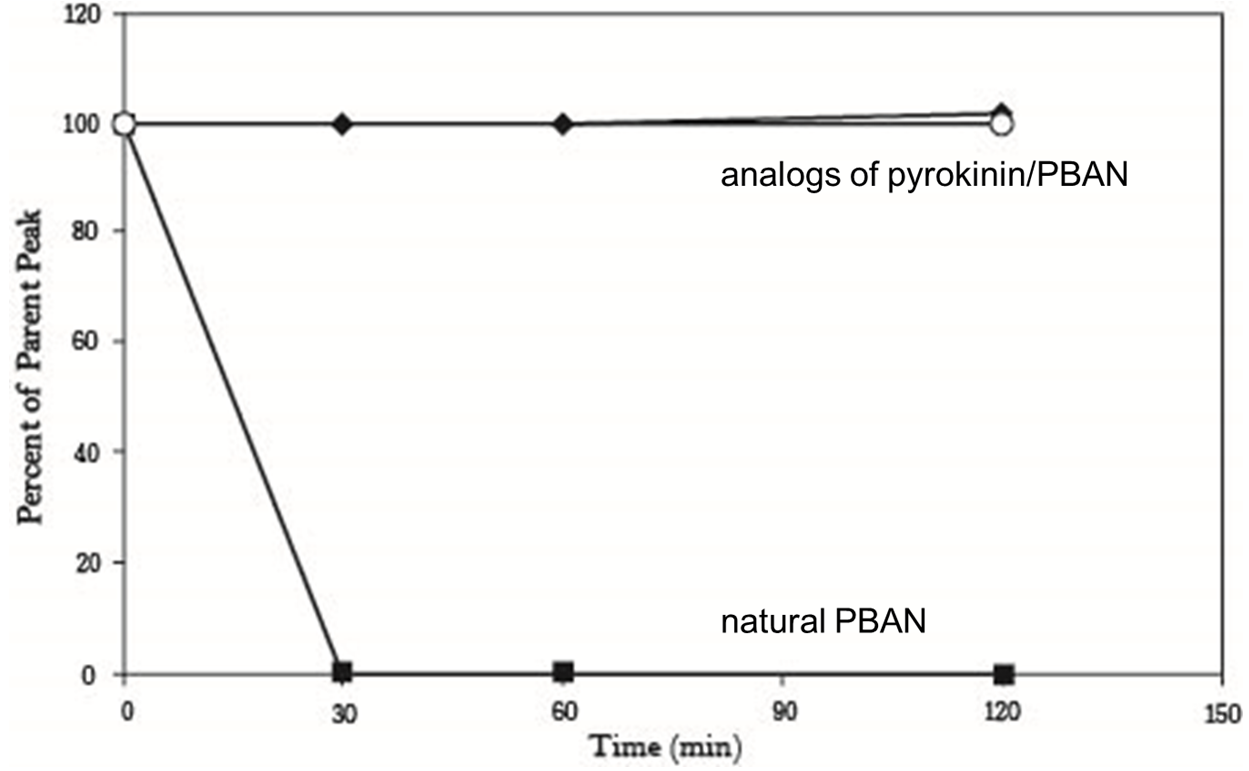
Our Solution
The results above did not sound good to us, but there was another experiment that interested us in the same research. Researchers also conducted oral test with artificial PBAN/pyrokinin analogs (Fig.3-3-1), in this experiment, they fed moths with sugar solution which contained their PBAN analogs, and measured the amount of pheromone produced over time. (Blank: natural PBAN in low concentration) This result inspired us. Although natural PBANs can’t be maintained for a long time in moth’s body, we could solve this problem by simply feeding moths with high concentration PBANs continually.
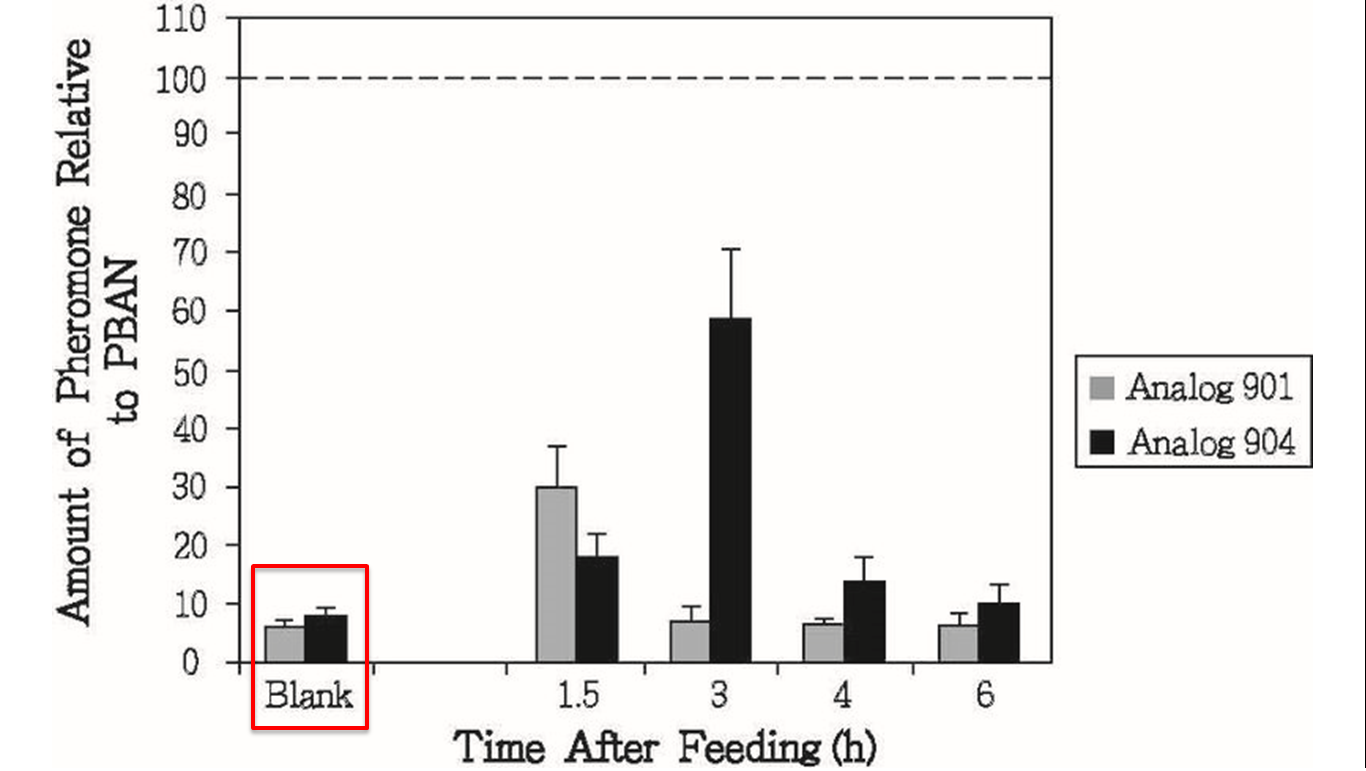
Thus, as long as female moths suck the high concentration PBAN solution continuously, the PBAN in the moths’ body will be replenished continually even if peptidase degradation occurs. Then, there is a high possibility of PBAN being absorbed by the moths’ body from the digestive system and succeed in stimulating the pheromone gland. Thus, if we feed the female insects with high concentration PBAN solution continuously, the female insects will produce pheromones for us, which theoretically solves the problem of PBAN's inability to maintain for a long time in the insects’ body. As to how we produce PBAN and apply our concept to capture wanted harmful insects, we will explain in the following.
How We Are Going to Use PBAN?
In our project, we will biologically synthesize PBAN with the E.coli. We store the PBAN inside a trapping device (check this out at our Device page). In the device, there will be appropriate lighting and nutrient sources that will attract insects.
Once an insect is attracted into our device and ingests the nutrient sources we provide, it will also inevitably come in contact with our PBAN. As the PBAN works and activates the pheromone synthesis of the attracted insect, more of this species of insect’s counterparts will be attracted and later captured.
Owing to the first feature mentioned above, PBAN is species-specific, which means that it doesn't matter if other kinds of insects fly into our device and eat the PBAN. This is because the insects we don't want to catch will not be stimulated by PBAN to produce pheromone. Therefore, the PBAN is only for what we want to catch, and we are sure that our method won't affect other kinds of insects.
Reference
- Russell Jurenka, Insect Pheromone Biosynthesis, Topics in Current Chemistry (2004) 239: 97– 132 DOI 10.1007/b95450, 2004
- Ronald J. Nachmana, Peter E.A. Teal, Allison Strey, Enhanced oral availability/pheromonotropic activity of peptidase-resistant topical amphiphilic analogs of pyrokinin/PBAN insect neuropeptides, Peptides 23 (2002) 2035–2043.
- RELLA L. ABERNATHY, RONALD J. , PETER E. A. TEAL, OKITSUGU YAMASHITAS AND JAMES H. TUMLINSON, Pheromonotropic Activity of Naturally Occurring Pyrokinin Insect Neuropeptides (FXPRLamide) in Helicoverpa zea, Peptides, Vol. 16, No. 2, pp. 215-219, 1995.
Biobrick Design
Basic Biobrick Design
We searched the DNA sequences of the PBANs of many kinds of insects on NCBI, then compared them to the amino acid sequences from papers so that we can select the DNA fragments that directly correspond to gland-stimulating function. By ligating the constitutive promoter (BBa_J23101), ribosome binding site (BBa_B0034) and PBAN DNA sequence with a terminator (BBa_J61048) at last (we delimit this sequence as basic part), we were able to make E.coli directly produce these PBANs continuously instead of the original complex process of PBAN biosynthesis in insects.
Multifunctionality
We can assemble these basic parts together easily because the number of base pairs of these basic parts are small. We can assemble different basic parts that contain different PBAN DNA sequences to resolve different insect problems. Therefore, our biobrick design can be customized according to the users' needs. For instance, if there is a farm harmed by 3 kinds of moths: Lymantria dispar, Spodoptera litura and Mamestra brassicae, what we have to do is to ligate the PBAN DNA sequence of 3 basic parts into one plasmid and let the E.coli express these PBANs. After these three kinds of moth ingest these three kinds of PBANs, subsequently, these 3 species of moths will produce their own pheromones to attract their same-species counterparts. To put it simply, our PBAN basic parts can be assembled together with any combination in infinite possibility.
For even more creative ideas, each of the PBAN basic parts can use different promoters, RBS and terminators to make many different regulation. Thus, not only can we produce many different PBANs with just one strain of E. coli, but these parts can be regulated to our desire. Thus, our PBAN biobricks really have infinite potential!
Device
In order to actually attract and capture the insect, we take the different weather conditions such as light and temperature into consideration. The different conditions will change the efficiency of insect attraction. Therefore, we design a device that can be used in different conditions, which would allow farmers to choose the best way for their local condition.
Introduction
Since insects behave widely different to the gravity force, we design a device which could catch specific kinds of insect species that we want. For example, Agrotis ypsilon (Rottemberg) and Spodoptera litura fall into the kind of moth that have negative geotaxis (antigravity, tendency to fly upwards). Thus, we made a trap with accessible pathway at the bottom. Once an insect enters the device, it could only go up and be trapped inside the pyramid. However, after field investigation, we found some insects still escape from the device. Then we came up with a new version trap with doubled layers, inner shell and outer shell.
Assembling Process
Before the detailed description of how we design our device, we can show you a simple animation of the assembling process of our device. As you can see, our device is very easy to use. Just assemble the outer shell, inner shell (containing PBAN) and tenons together to complete the device. Then, you can put the device at where you want to attract the harmful insects.
Mechanism of Attraction
As you can see, we divide our design into two parts-exterior and interior. The exterior is just like the appearance of a pyramid, and the interior is designed to accommodate PBAN. At the beginning of using the device, we turn on the blue light LEDs to attract the target harmful insects. When the target female insects are stuck in the interior and eat the food mixed with PBAN solution, they will release pheromones, and attract same-species counterparts. Even if we turn off the blue light, our device can attract many target male insects because the female insects inside our device is still in rut and releasing sex pheromone to attract their mates. After the harmful insects go into our device, the design of our device will take advantage of their habit. Insects always fly high to escape so they will be stuck in the top of our device.
Device Design
More detail information about how we design our pyramidal device can downloaded in the file below.
Process to Assemble Our Device & Main Idea of Our Device Design
Outer Shell:
We shaped the device into a pyramid. Its special layout also enriches the device with mysterious colors.
1. The outer shell is composed of 4 triangular acrylic planes which has a trapezoid entrance. When insects come inside and ingest PBAN solution, they will release pheromone. With the pheromone scent, our device can trap and collect more and more insects of the same species.
Inner Shell:
Similar to the outer one, the inner shell is also composed of 4 trapezoid planes and is removable from the base. The only difference is that its top is not sealed so to allow entry of the captured insects.
1. There would be a container of PBAN solution placed at the bottom.
2. Blue LED light bulbs will be installed around the top of the inner shell plane to attract the first female insect.
Latch:
A part to stabilize the pyramid.
1. Stabilize 4 corners of the bottom.
2. To make sure the outer shell can combine with the inner one tightly.
Advantages
1. We successfully trap the targeted female moth in our device, forcing them to release sex
pheromone by ingesting PBAN, which results in attracting more insects of the same kind.
2. The inner shell is removable so it’s easier to replenish new PBAN solution and the food for the insect.
3. Compared to conventional light bulbs, LED is much brighter and conserves more energy. It could powered by battery so it’s also easier in practical use.
4. The PBAN system can run day and night. Its function won’t be affected by sunlight.
5. Pyramid is a good-looking form and can enrich the entire device with a technological feeling.
 "
"



